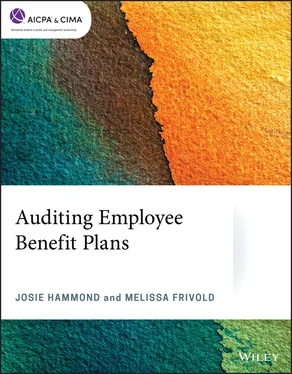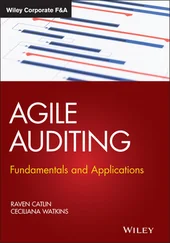1 ...8 9 10 12 13 14 ...21 Other plans have fewer restrictions on distributions. Again, the terms and conditions for distributions will be described in detail in the plan.
Plan termination or merger
Virtually all plans can be terminated, whether through liquidation or combination. Again, the procedures for these events will be outlined in the plan document. Most defined benefit pension plans face a formal approval process by the Pension Benefit Guaranty Corporation prior to termination. Money purchase pension plans require a participant notice to terminate. Other single employer plans can generally be terminated through the unilateral action of the employer or Plan Administrator. Multiemployer or multiple employer plans may involve other entities in the termination process.
The tax code rules are complex. They require a high level of communication between the parties involved in the administration of the plan and an extremely precise execution of all of the tasks associated with operating a plan. Due to this strenuous environment and the fact that where a plan violation occurs, the tax consequence is to harm the typically innocent participant, rather than the party who made the error, the IRS has developed a comprehensive relief system. The basic goal of the relief system is to place the affected participants in the position that they would have been had the error not occurred.
The Employee Plan Compliance Relief System is currently only applicable to pension plans of all types – defined benefit, defined contribution, and 403(b) plans. It includes three basic relief concepts – self-correction, requested correction, and enforced correction. Self-correction is for minor operational defects, where the employer can unilaterally correct for the error and retain the plan’s exempt status without notifying the IRS. Requested correction applies where the sponsor identifies an issue that is of some substance. The sponsor submits a formal request for relief to the IRS. Sometimes, the correction must be negotiated with the IRS, but at the end of the process, the sponsor will receive a letter from the IRS agreeing that the correction was sufficient to retain the plan’s exempt status. Enforced correction is where the defect is discovered upon IRS audit. There is less flexibility in negotiating these corrections and the plan sponsor is frequently exposed to a penalty in addition to the correction amount.
Some actions can be taken with no cost, other than the cost of correction itself. Other actions require the sponsor to pay a fee to the IRS. This program is documented in Revenue Procedure 2016-51, Section 12. The Pension Protection Act of 2006 authorized the government to continue to improve the correction program to encourage employers to correct defects. In 2015 and 2016, the IRS did revise the program to provide more flexibility on plan correction approaches. Detailed information on the current status of the correction program is available at www.irs.gov/Retirement-Plans/EPCRS-Overview.
Because the Pension Protection Act included a directive from Congress to the IRS to make this relief program even more flexible in order to help sponsors retain the exempt status of their plans, it is likely that the IRS will continue to provide more relief both in terms of the correction process and the items eligible for correction. As such, the auditor needs to be familiar with the most recent version of this ever evolving program.
1 Which plans are not subject to ERISA’s minimum vesting standards?Employee stock ownership plans.Welfare benefit plans.401(k) plans.Cash balance plans.
Key plan operational concepts
Fiduciary conduct
Both Title I (DOL provisions) and Title II (IRS provisions) of ERISA require that the plan be operated for the benefit of the plan participants and beneficiaries. This is the fiduciary duty. The Plan Administrator and the Trustee are typically the “fiduciaries” with respect to the plan. But, ERISA defines that term much more broadly. Basically, any party that has discretionary authority with respect to the plan may be classified as a “fiduciary.” The result is that all of those parties must exercise this standard of care with respect to the plan participants or beneficiaries. This is sometimes referred to as the “prudent expert” standard as it is not just a layman’s standard of care, but the standard of care expected of a person who is familiar with the law.
A fiduciary is required to follow the plan agreement, except to the extent that the written agreement is at odds with ERISA.
It is becoming more and more common that plans acquire their investments indirectly, rather than having direct ownership of securities or other assets. The most common form of ownership is through a mutual fund. Mutual funds do not trigger any separate reporting. Other indirect forms of ownership do require additional reporting that affects the audit and the financial report.
These are generally referred to as “Direct Filing Entities,” though that is somewhat of a misnomer, as not all such entities are required to file separately.
The types of direct filing entities (DFEs) are as follows:
Master Trust Investment Account (MTIA)– A master trust is a trust for which a “regulated financial institution” serves as trustee or custodian (regardless of whether such institution exercises discretionary authority or control with respect to the management of assets held in the trust), and in which assets of more than one plan sponsored by a single employer or by a group of employers under “common control” are held.Common control is determined on the basis of all relevant facts and circumstances (whether or not such employers are incorporated).A regulated financial institution means a bank, trust company, or similar financial institution that is regulated, supervised, and subject to periodic examination by a state or Federal agency. A securities brokerage firm is not a similar financial institution.A master trust investment account may consist of a pool of assets or a single asset. Each pool of assets held in a master trust must be treated as a separate MTIA if each plan that has an interest in the pool has the same fractional interest in each asset in the pool as its fractional interest in the pool, and if each such plan may not dispose of its interest in any asset in the pool without disposing of its interest in the pool. A master trust may also contain assets that are not held in such a pool. Each such asset must be treated as a separate MTIA.
Common Collective Trust (CCT)– A common collective trust is a trust maintained by a bank, trust company, or similar institution which is regulated, supervised, and subject to periodic examination by a state or Federal agency for the collective investment and reinvestment of assets contributed thereto from employee benefit plans maintained by more than one employer or a controlled group of corporations.
Pooled Separate Account (PSA)– A pooled separate account is substantially similar to a CCT, except that a regulated insurance company holds the funds.
Group Insurance Arrangement (GIA)– A group insurance arrangement provides benefits to the employees of two or more unaffiliated employers (not in connection with a multiemployer plan or a collectively-bargained multiemployer plan), fully insures one or more welfare plans of each participating employer, uses a trust or other entity as the holder of the insurance contracts, and uses a trust as the conduit for payment of premiums to the insurance company.
103-12 Entity– The most obscure of the DFEs is the 103-12 entity. It is defined in the ERISA regulation for which it is named. A 103-12 entity is frequently a trust or partnership, which is not one of the preceding entities. It holds assets of more than one plan. Separate filing is elective, but such filing allows the plan to report its investment interest in the entity. Absent this separate reporting, the plan must report the plan’s share of each of the entity’s underlying assets and, if material, the auditor would consider procedures to audit this underlying activity.
Читать дальше











